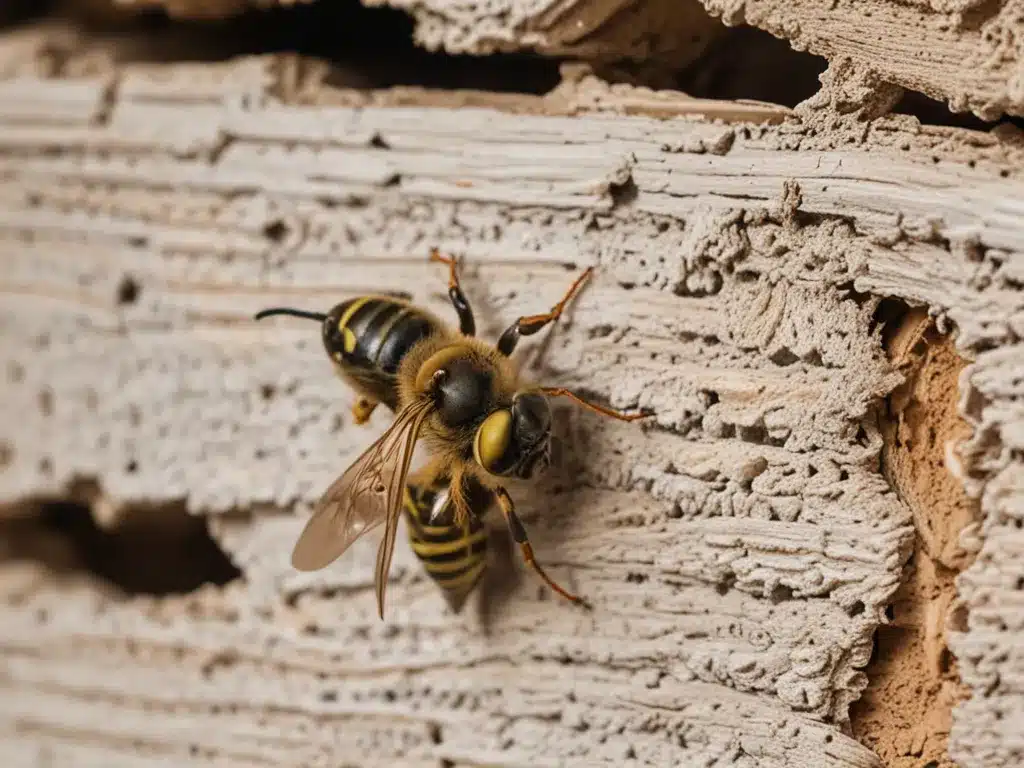Introduction
Dealing with wasps, bees, and other stinging insects that build nests on your property can be intimidating. However, with the right approach and protective equipment, their nests can be removed safely and effectively. In this article, I will provide an in-depth guide on clearing wasps, bees, and their nests from your home and yard.
Locating the Nest
The first step is to locate the nest. This will determine the removal strategy.
-
Wasps often build nests under eaves, in holes in the ground, or in cavities like meter boxes and hollow fences. Look for areas wasps are frequently flying to and from.
-
Bees prefer more protected areas like inside walls, chimneys, attics, or unused structures. Listen for buzzing and watch for bees entering one area.
-
Yellowjackets nest underground, in shrubs, trees, or voids in walls. Their holes may be surrounded by small pellets of paper material.
-
Activity increases in warmer months when colonies expand. Observe areas in the morning and evening.
-
Track flight paths back to nest openings. Use binoculars for high or hard to access areas.
Safety Gear
Stinging insects vigorously defend their nest. Protect yourself with:
-
Thick clothing covering the body, such as jeans and sleeves
-
Leather gloves
-
Boots or shoes with pants tucked in
-
Duct tape to seal any gaps
-
A bee suit or hood for large infestations
-
Tape gloves and clothing cuffs for maximum protection
Removal Methods
There are several approaches to destroy nests and clear out the insects:
Insecticide Treatment
-
Insecticide sprays or powders are an easy DIY method for accessible nests. Spray the opening at night when all insects are present.
-
Repeat applications may be needed as eggs hatch. Follow label directions carefully.
Vacuuming
-
Use a wet/dry shop vac to suck up insects and nest material. Cover the end of the hose with mesh to avoid clogs.
-
Do this at night when cooler temperatures make insects sluggish.
Nest Removal
-
Physically removing nests is an eco-friendly option.
-
Use a long pole to dislodge nests in trees or under eaves. Knock it into a large trash bag and tightly seal.
-
Protect yourself as you will be close to the disturbed insects.
Trap Outs
-
Place a transparent container or bag over nest openings.
-
Insert a one-way valve so insects can exit to forage but not re-enter. The colony will die off within weeks.
Professional Help
For large infestations in hard to reach areas, it is best to hire a licensed pest control operator. They have specialized tools, insecticides, and protective gear for safe and effective removal.
Post Treatment
After removing nests:
-
Seal up access holes with caulk, wood, steel wool, or other excluders so new colonies cannot enter.
-
Continue to monitor the location for any persistent insect activity. Retreat if necessary.
-
When safe, remove protective coverings from the nest site.
-
Clean up and dispose of dead insects and debris from vacuuming.
Preventing Future Nests
There are proactive steps to deter stinging insects from nesting on your property:
-
Install screens on all vents, chimneys, and openings.
-
Seal cracks and crevices where insects can enter.
-
Prune back trees and vegetation touching buildings.
-
Clear out wood piles, debris, and other clutter where insects may nest.
-
Use residual insecticides outside before insects are active. Reapply as directed.
-
Hang wasp traps or bee houses to divert them from nesting on your home.
When to Call a Professional
Seeking professional pest control may be prudent in these situations:
-
The nest is in a hard to reach location like the attic or walls.
-
You are allergic to stings.
-
The infestation is very large.
-
Repeated DIY efforts have failed.
Licensed exterminators have specialized tools, insecticides, protective gear, and experience for difficult nest removals. Their expertise clears infestations while keeping people safe.
Conclusion
Removing wasps, bees, hornets, and yellowjackets from your home or property involves locating nests, donning protective gear, and employing removal strategies like vacuuming, nest destruction, or insecticides. Sealing up access points deters future colonies from forming. For extensive infestations in tricky areas, professional pest control assistance may be advisable. With the proper approach and precautions, stinging insect nests can be eliminated both effectively and safely.







